In the annals of 1970s cinema, a golden age punctuated by iconic characters and groundbreaking franchises, lies a lesser-known film that deserves a second look: Hanover Street Film. Released in 1979, nestled between Star Wars: A New Hope and The Empire Strikes Back, and just before the advent of Indiana Jones in Raiders of the Lost Ark, this movie offers a different facet of Harrison Ford’s early stardom. While the aforementioned blockbusters cemented Ford’s place in pop culture history with enduring adventure and sci-fi thrills, Hanover Street film, directed by Peter Hyams, presents a mature, romantic drama set against the backdrop of World War II, echoing the classic Hollywood romances of yesteryear.
Much like Star Wars and Indiana Jones intentionally harkened back to simpler, more escapist forms of entertainment, Hanover Street film consciously draws inspiration from the romantic and suspenseful wartime narratives of films like Casablanca, The Lady Vanishes, and Notorious. However, instead of youthful escapades, Hanover Street film delves into a complex and poignant love story entangled with espionage, achieving a remarkable feat: it stands shoulder-to-shoulder with the very classics it emulates, despite remaining largely obscure to modern audiences.
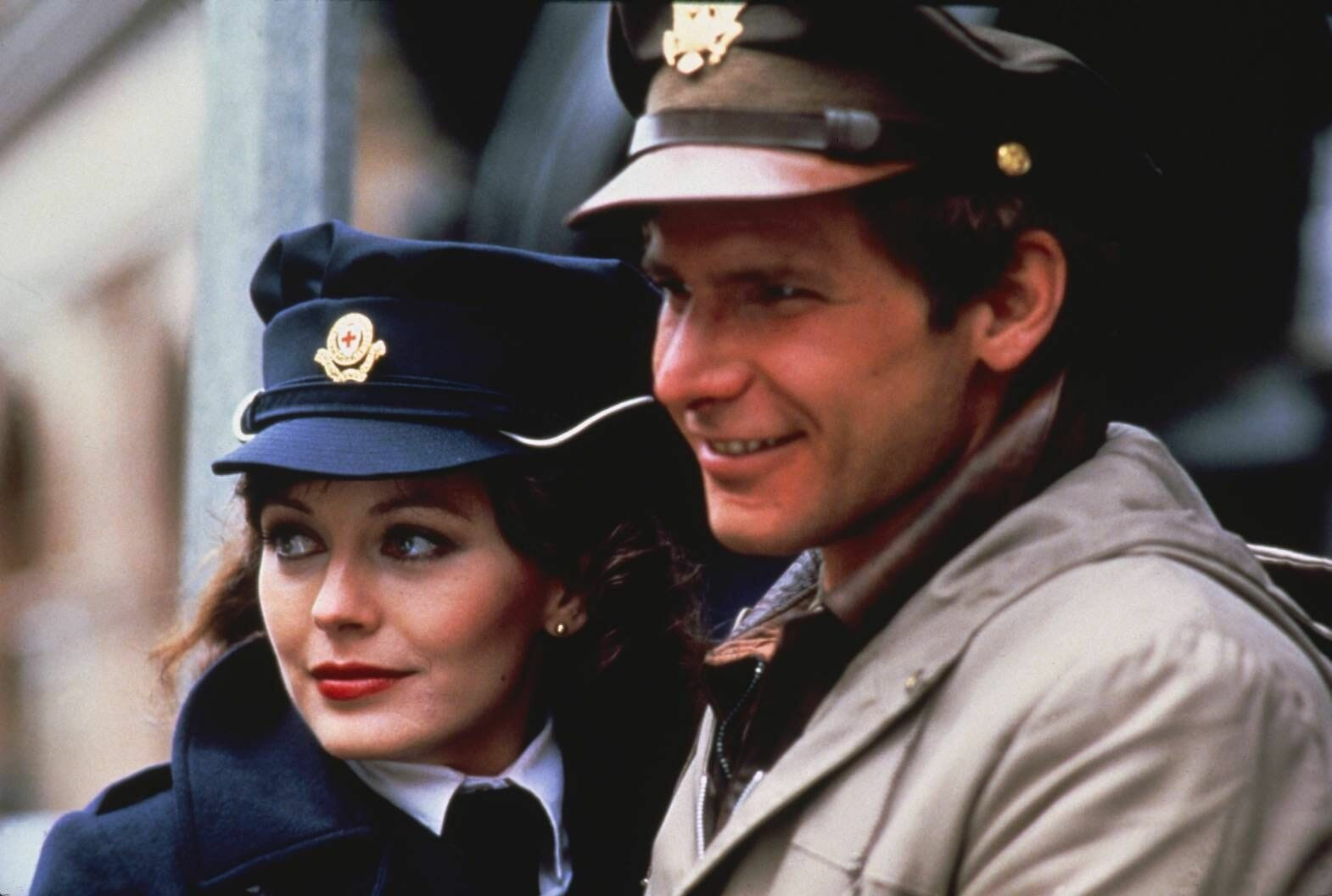
Harrison Ford in Hanover Street film, a romantic World War II drama, showcasing his early leading man charisma.
Ford embodies David Halloran, a courageous American bomber pilot navigating the perilous skies over Europe during World War II. Fate intervenes when he encounters Margaret Sellinger, played by Lesley-Anne Down, a British nurse, on, aptly named, Hanover Street. Their connection is immediate and intense, blossoming into a passionate wartime affair that seems destined for tragedy from its inception. The complication arises when Margaret reveals she is married to Paul Sellinger, portrayed by the esteemed Christopher Plummer, a respected officer in British Intelligence.
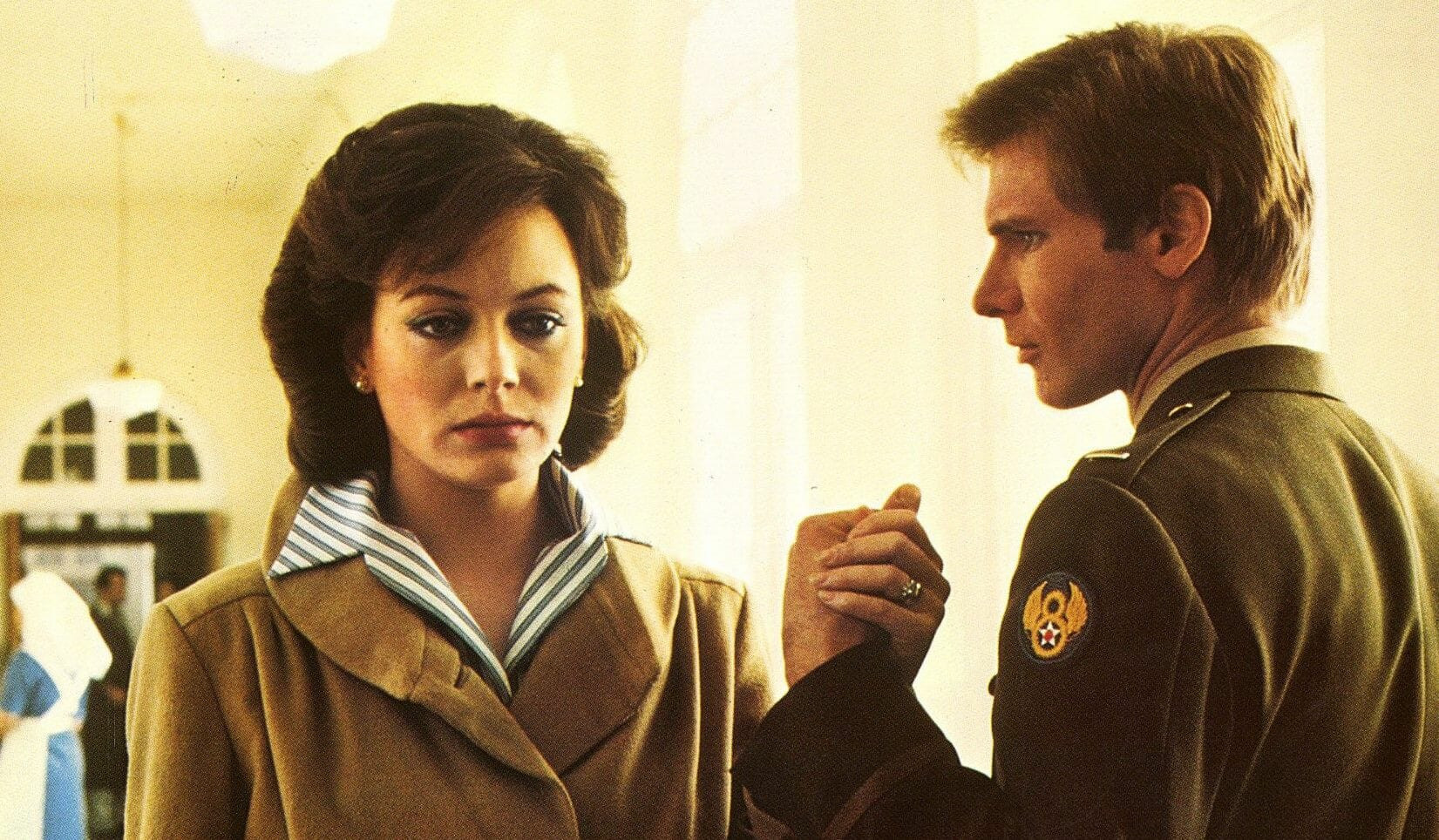
Lesley-Anne Down and Harrison Ford in Hanover Street film, depicting a poignant love story amidst the turmoil of World War II.
The classic love triangle, particularly when framed against the dramatic canvas of World War II, is a well-trodden narrative device. Yet, Hanover Street film revitalizes this trope, imbuing it with fresh emotional resonance. A significant factor in its success is the nuanced portrayal of Paul Sellinger by the late Christopher Plummer. He embodies the quiet decency and inherent goodness that makes infidelity all the more morally complex and the prospect of leaving him utterly devastating. Unlike the sanitized wartime romances of previous decades governed by strict production codes, Hanover Street film, unburdened by such constraints in 1978, allows for a more realistic and emotionally ambiguous resolution. A particularly poignant scene sees Plummer and Down’s characters in a phone conversation, where Sellinger’s vulnerability shines through as he apologizes for not being as exciting as he believes his wife desires – a masterclass in understated storytelling within a single, unforgettable moment.
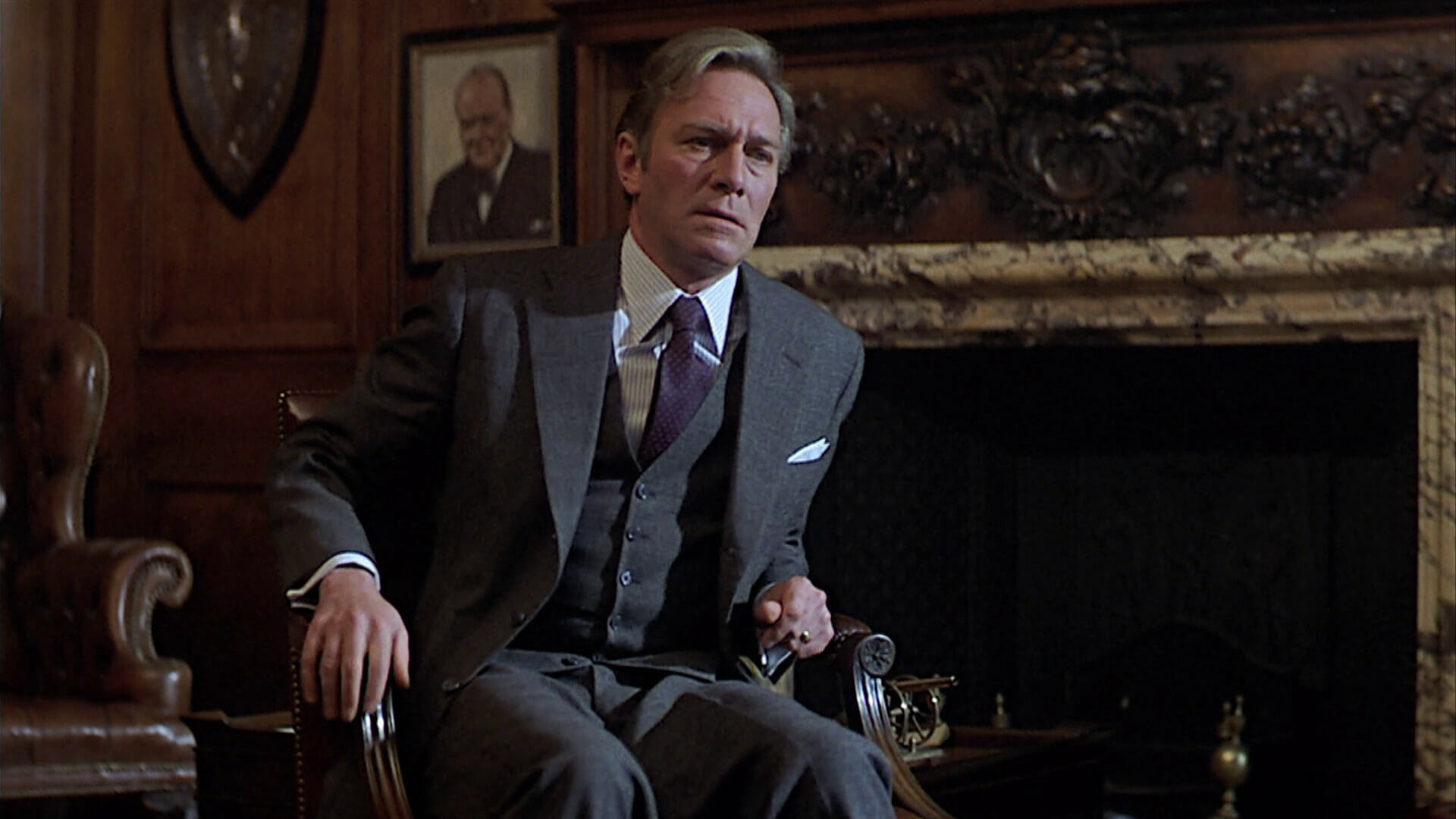
Richard Masur and Harrison Ford in Hanover Street film, highlighting the war movie aspect with vintage WWII aircraft.
What sets Hanover Street film apart is its skillful fusion of genres. While fundamentally a romance, arguably one of Hollywood’s most underappreciated, it transcends the limitations of a purely love-centric narrative. Halloran’s role as a bomber pilot injects thrilling aerial combat sequences into the film, showcasing a stunning array of authentic WWII aircraft in action. While these scenes might lack the CGI-fueled spectacle of contemporary action films, they possess a tangible authenticity that resonates with the war films of the period. Adding to this atmosphere is Richard Masur’s memorable portrayal of a wisecracking bombardier, a classic war movie archetype who uses humor to mask the very real terrors of aerial warfare.
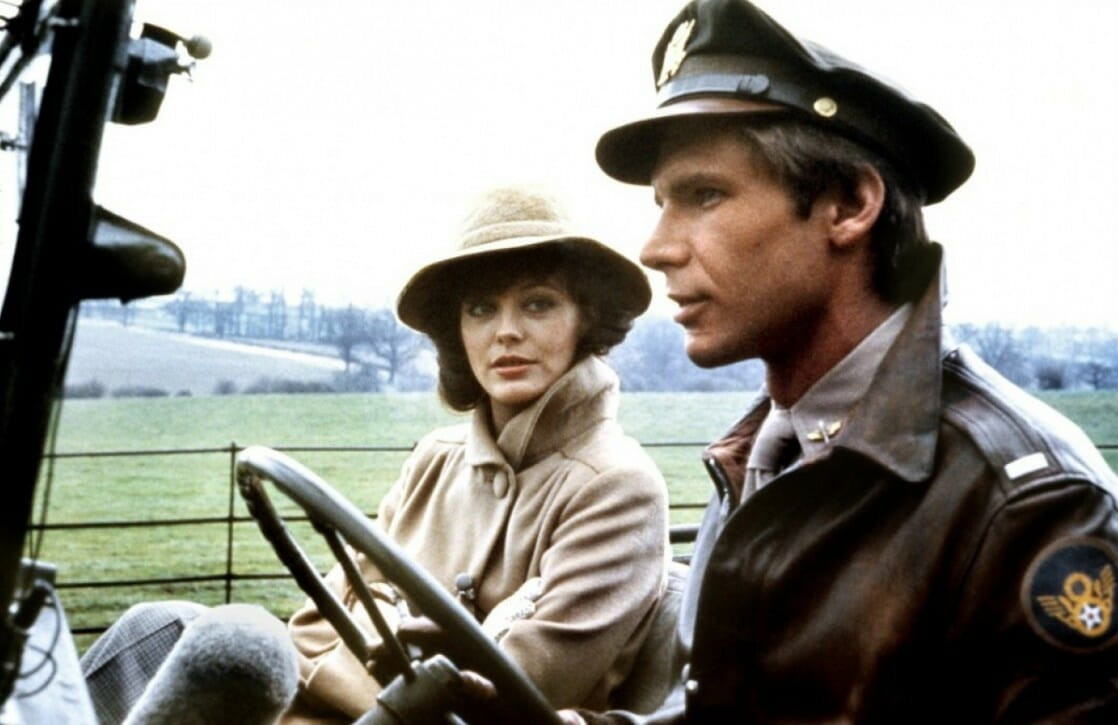
Christopher Plummer in Hanover Street film, embodying a British Intelligence officer caught in a dramatic wartime spy mission.
Beyond romance and aerial action, Hanover Street film unveils another layer in its final act. Plummer’s Paul Sellinger, the intelligence officer, embarks on a perilous top-secret mission into Nazi-occupied France, stepping in when his designated operative is unable to proceed. In a cinematic twist of fate, Halloran’s bomber crew is tasked with flying Sellinger across enemy lines. When the mission takes an unexpected turn, the pilot and the intelligence officer find themselves unexpectedly united, infiltrating a Gestapo stronghold together. Halloran, unprepared for espionage and lacking German language skills, becomes entangled in cross-cultural intrigue and suspense, a narrative thread that strongly suggests Hanover Street film as a potential influence on Quentin Tarantino’s own wartime thriller, Inglourious Basterds. Furthermore, considering other wartime romances that blended genres, it’s plausible that Robert Zemeckis drew inspiration from Hanover Street film when crafting Allied, another commercially unsuccessful film despite its star power and directorial talent.
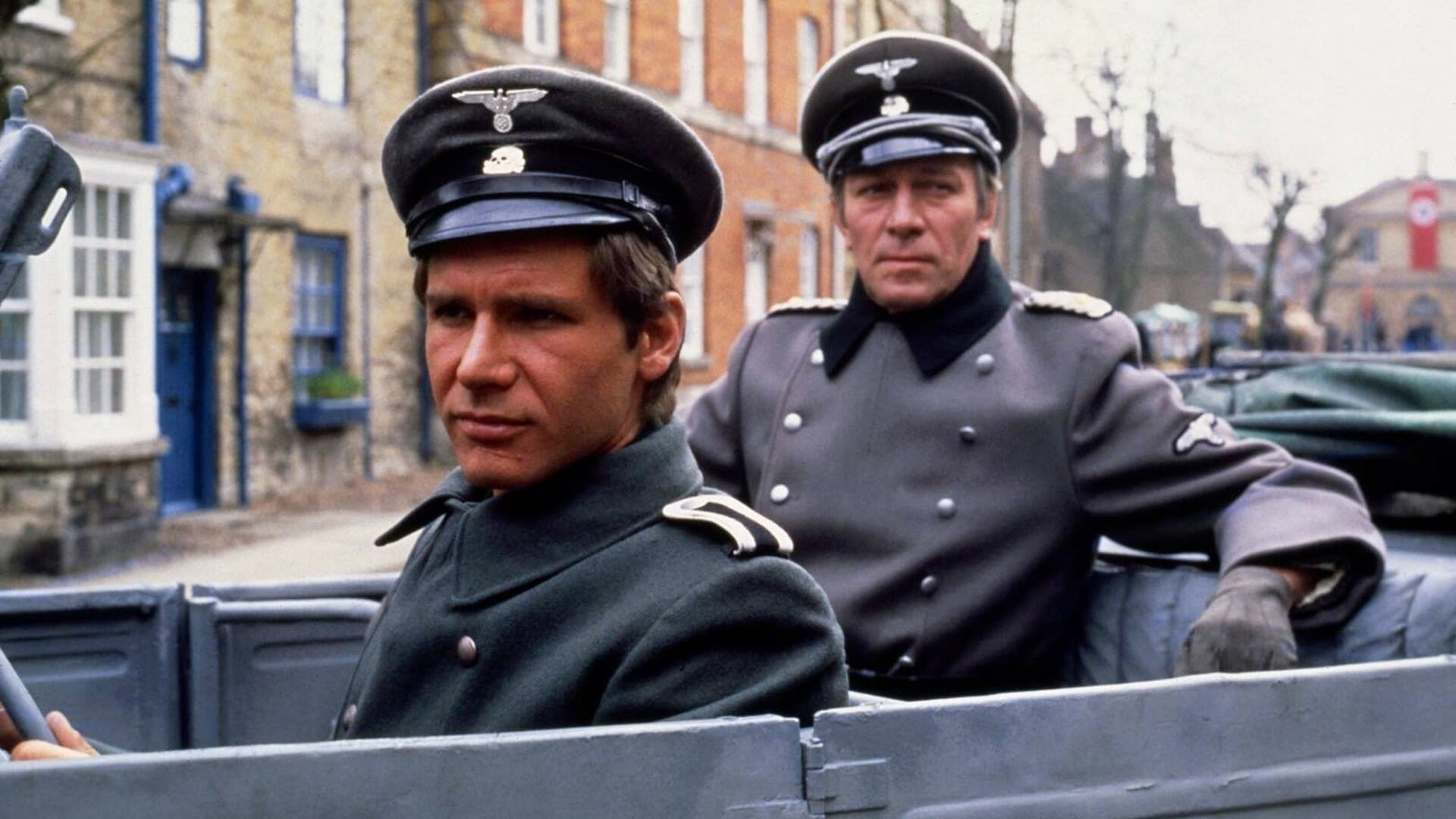
Suspenseful scene from Hanover Street film, featuring Harrison Ford and Christopher Plummer in Nazi-occupied France, highlighting the film’s Hitchcockian elements.
The sequences depicting Ford and Plummer’s clandestine operations in France inject a palpable Hitchcockian suspense into Hanover Street film, propelling it towards an emotionally resonant conclusion – one that, unlike Casablanca‘s iconic ending, remains largely unspoiled in popular culture, best experienced firsthand.
The question lingers: why has Hanover Street film, despite its merits, languished in relative obscurity? It’s a perplexing enigma, especially considering Harrison Ford’s enduring stardom and his compelling performance in his prime, even sporting a bomber jacket reminiscent of his Indiana Jones attire. While he may not dispatch as many Nazis as Indy, the thematic and stylistic echoes with Raiders of the Lost Ark might lead one to expect a greater appreciation for Hanover Street film. Instead, upon release, it faced commercial failure and has since faded further from public consciousness. The reasons remain murky, perhaps linked to reports of Ford’s unhappy experience during filming and subsequent reluctance to promote the movie. He reportedly claimed never to have even seen the finished product. (Mr. Ford, if you happen upon this, we urge you to give it a watch; it’s genuinely worthwhile!).
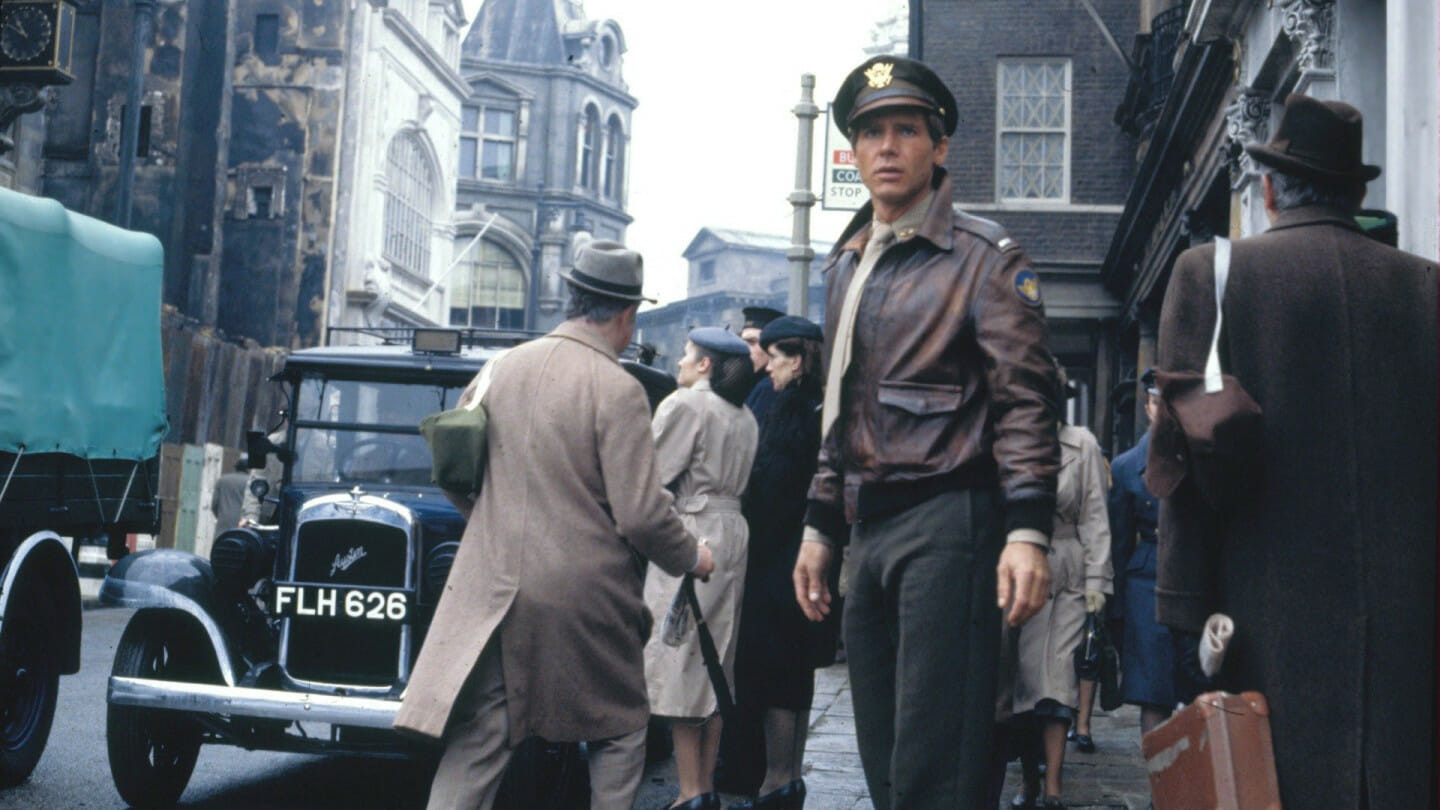
Peter Hyams directing Hanover Street film, showcasing his signature visual style and attention to detail in a historical setting.
Director Peter Hyams, a celebrated if underappreciated stylist, both wrote and directed Hanover Street film. Even in this early work, his distinctive stylistic flourishes are evident – the sharp, witty dialogue and the beautifully lit nighttime scenes that became hallmarks of his filmography. While he later gained recognition, and sometimes notoriety, for his science fiction ventures like Capricorn One, Outland, and 2010: The Year We Make Contact, Hanover Street film reveals his meticulous approach and dynamic action choreography equally adept in a historical period setting.
In conclusion, Hanover Street film is ripe for rediscovery by film aficionados. It’s a well-crafted, engaging crowd-pleaser in the classic Hollywood mold, a respectful homage to the master storytellers of the studio era, bolstered by outstanding performances from Ford, Down, and Plummer. Perhaps with renewed attention, David Halloran can finally claim his rightful place alongside Han Solo and Indiana Jones in the pantheon of iconic Harrison Ford roles.


